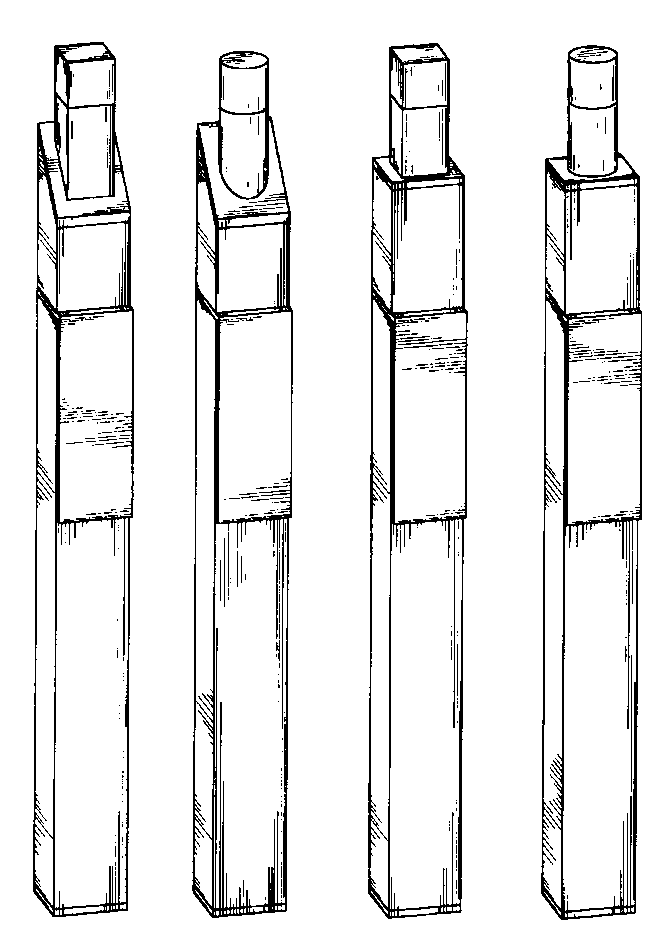Can a single design patent application include multiple designs?
You can try, but the risks and consequences of failure may heavily outweigh potential benefits. Under specific circumstances, it might be possible to include multiple embodiments in a single design patent application. Multiple embodiments, however, may often lead to complications and greater expenses down the road. Chances of success may be slim, and the risk of a permanent loss of rights can be devastating. So be careful.
Need to file a strong and proper design patent application? Call patent attorney Vic Lin at (949) 223-9623 or email vlin@icaplaw.com to explore working with us.
When are multiple embodiments of a design acceptable?
An example of such a minor difference may be one that is obvious to a designer of ordinary skill in the art. Here’s an example from the USPTO where multiple embodiments of a single concept would be acceptable.

What are the benefits of multiple embodiments in a single design patent application?
There are pros and cons to including multiple embodiments in a single design patent application. Each case is specific. Generally, the cons would appear to outweigh the pros due to the risks of higher costs, delays and surrender of rights.
The pros include potential cost savings. Design patents do have any renewals or maintenance fees, so there are no additional post-registration savings in terms of having one granted design patent versus multiple design patents.
What are the risks of multiple embodiments in a single design patent application?
The primary risk in a multi-embodiment design patent application is that the patent examiner will find multiple inventions. This means that the examiner thinks the multiple embodiments contain more than one patentably distinct design [see MPEP 1504.05]. Accordingly, the examiner will issue a Restriction Requirement, thereby forcing the applicant to pick a particular embodiment.
Can a multi-embodiment design patent application lead to higher costs in the long run?
If the examiner sends a Restriction Requirement, the applicant will likely incur the following costs:
- Filing a response to pick a particular design (usually attorney’s fees only if filed by the extension-free deadline); and
- Filing a divisional application to pursue the non-elected design, which will involve USPTO fees and any attorney’s fees.
Is there a higher chance of delay in a multi-embodiment design patent application?
Design patent applications in the US have a high allowance rate of approximately 84%. Therefore, there is a strong probability that a single-embodiment design application would proceed from initial filing straight to an allowance without ever receiving an Office Action.
By increasing the probability of an Office Action (i.e., Restriction Requirement) due to multiple designs in a single application, an applicant risks the delay of an allowance on the first design as well as any additional designs.
Will the abandonment of non-elected designs be surrendered to the public domain?
Incorporating multiple embodiments in a single design patent application carries a greater risk of abandonment of the non-elected designs. The Federal Circuit has held that the removal of an embodiment in response to a Restriction Requirement in a design application will lead to abandonment of the non-elected design to the public domain if the applicant does not pursue the non-elected embodiment in a divisional design application.
Therefore, applicants filing a multi-embodiment design application must be prepared to file divisional applications should the examiner issue a Restriction Requirement.
When would a single design application with multiple designs be appropriate?
Prior to filing, the variations between the designs should first be identified. An assessment should then be made on both the significance of those features and the degree of variation between the embodiments.
For example, it may make sense to combine multiple embodiments in a single design application if:
- the varying features are not significant to the distinctive ornamental appearance of the overall design; and
- the degree of variation between the embodiments are relatively minor.
If the examiner considers the differences between the embodiments to be minor and patentably indistinct, then multiple designs with obvious minor variations may be allowed to proceed in the same application.
What is patentably indistinct?
Embodiments that are patentably indistinct from each other may remain in the same design patent application. To be patentably indistinct, the embodiments must constitute a single inventive concept. If the differences in features are significant to the ornamental appearance, the examiner may take the position that the embodiments are patentably distinct from each other because they do not constitute a single inventive concept.
To show that multiple designs are not distinct:
(A) the multiple designs must have overall appearances with the same design characteristics; and
(B) the differences between the multiple designs are insufficient to patentably distinguish one design from the other.
What is a recommended strategy for US design patent protection of multiple designs?
If the variations are significant to the ornamental appearance of the design or the variations are quite different, it may make more sense to concurrently file multiple design patent applications, each containing a single embodiment. This will avoid a Restriction Requirement, thereby leading a quicker allowance and registration.
Need to file a design patent application?
If you’re not sure whether to include multiple embodiments or file separate design patent applications, reach out to US patent attorney Vic Lin by email or call (949) 223-9623.


